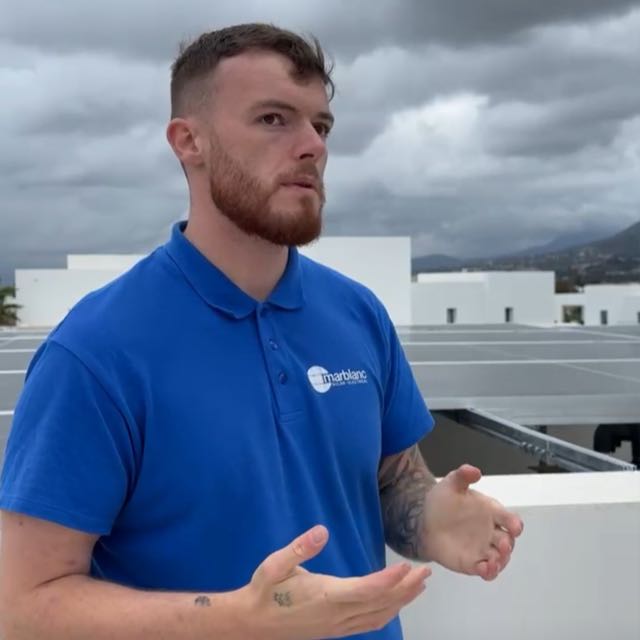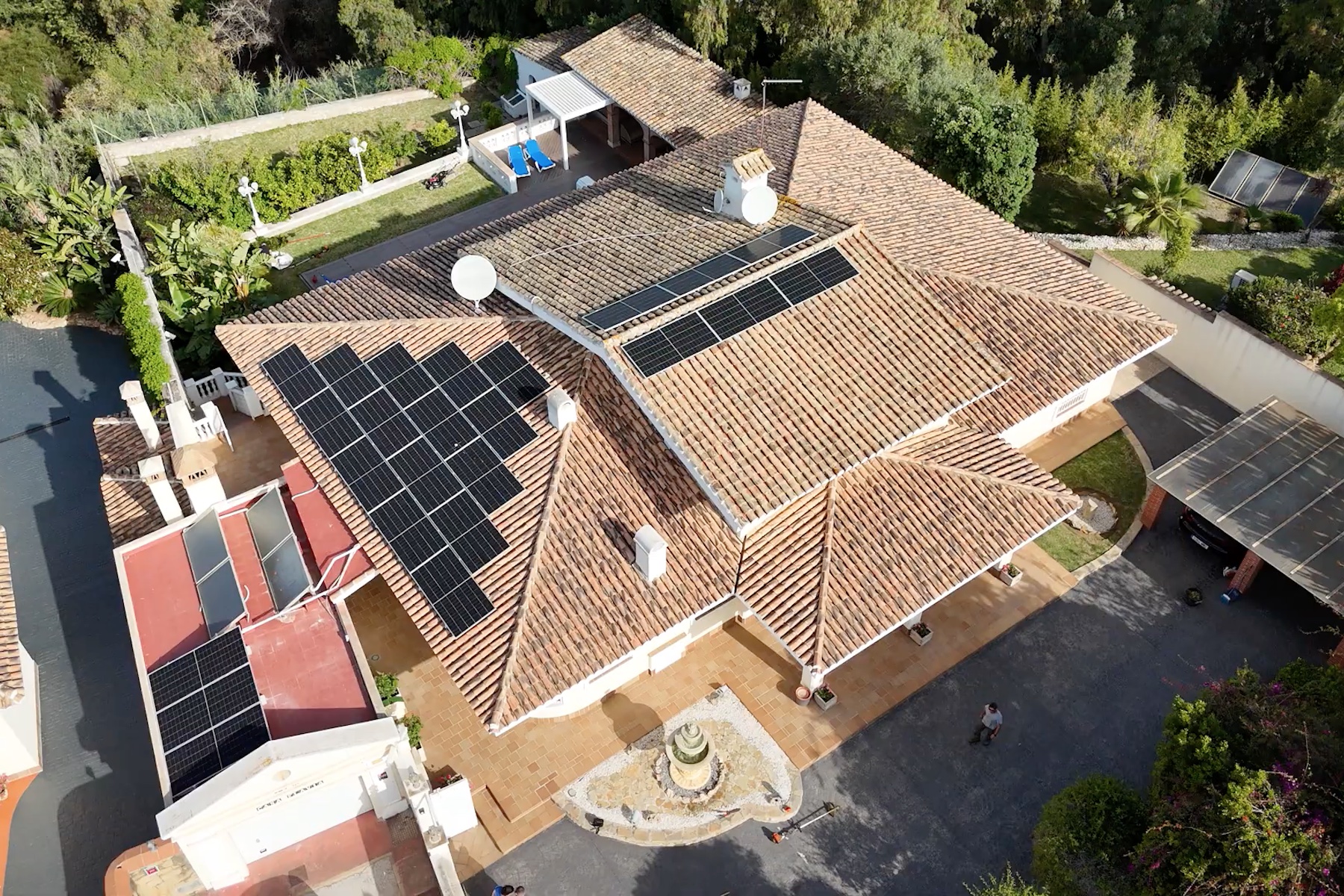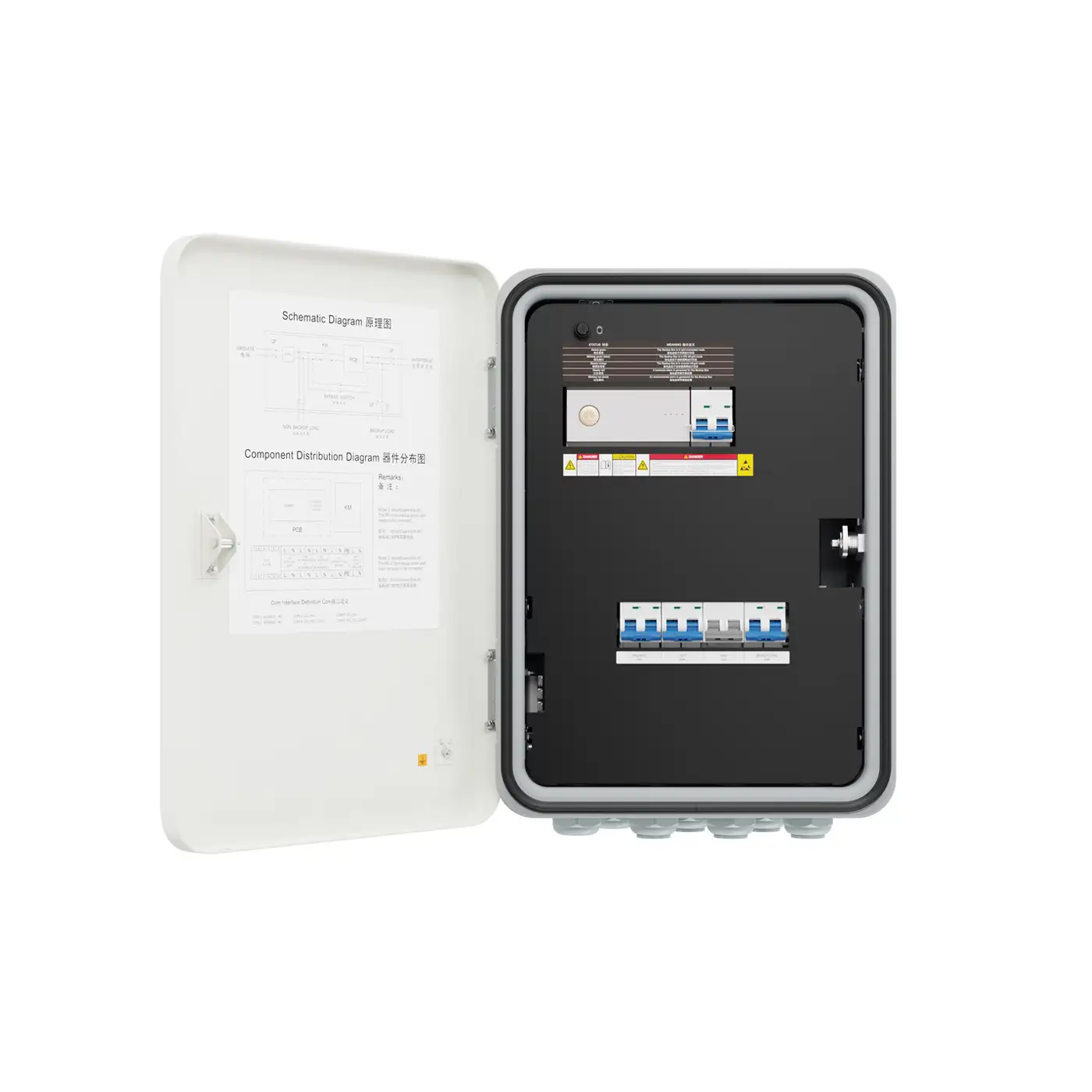
Adam Millington is the founder and co-owner of Marblanc Solar. He is a fully qualified electrician with a QQI Level 6 Advanced Certificate Craft –Electrical and a Masters in Sustainable Electrical Energy Systems at the Technological University Dublin.
The day after Spain’s nationwide blackout on 28th April 2025, the phone in the Marblanc Solar office didn’t stop ringing.
Half the calls came from clients who’d already had a backup box installed with us.
They were just ringing to say it worked flawlessly:
- Their lights stayed on.
- Their fridges kept running.
- The backup box switched on in a millisecond.
The second kind of call?
That was people asking if we installed backup boxes and how quickly we could come round! We ended up booking in nearly ten new backup box installations that day.
Unfortunately, power cuts aren’t new for many parts of the Costa del Sol. One of our solar installations in Calahonda (Mijas) was for a client who complained of having power cuts as often as once a week.
But, after the nationwide blackout, getting a back up box has become a lot more important for a lot of people.
Below, I’ll explain exactly what a backup box is, how it works, and how it can keep your home running during a power cut, even if it happens at night.
Marblanc Solar is the top-rated solar installer in Marbella and the surrounding areas on the Costa del Sol in Spain. We offer homeowners a free site visit, drone inspection and savings estimation as part of our free solar survey.
Can You Still Use Solar Power During a Power Cut?
It’s a common misconception that having solar panels means you’ll still have power during a blackout.
But it doesn’t work like that.
If you don’t have a backup box, you’ll lose all power.
When the grid goes down, your inverter shuts off automatically. That’s because the inverter relies on a signal from the grid to function, and when that signal disappears, it cuts off power flow from your panels to your home.
It’s a safety feature designed to protect utility workers from solar systems feeding electricity back into the grid during a repair.
What About if You Have a Solar Battery?
Even if you’ve got a solar battery, you’ll still lose power during an outage.
Why? This is because the system shuts off because there’s nothing to safely isolate your home from the grid and reroute your stored energy.
I’ll admit, we had one client who was genuinely surprised when the lights went out.
They had a battery and assumed that meant backup power was a given.
Misunderstandings like this are the reason why we take so much time during our free solar survey to explain exactly what solar can and can’t do. We always carry out an in-person consultation and drone inspection first, then return to present and compare different system options, complete with a clear explanation of what each piece of equipment does.
In this client’s case, they hadn’t asked about power cuts during the consultation.
But, since the blackout, it’s one of the first questions we get from nearly every new enquiry. And that’s where the backup box comes in…

How a Backup Box Works
Before we go further, let me explain the difference between a solar battery and a backup box:
- A solar battery stores excess solar energy so you can use it later, especially in the evening or at night.
- A backup box detects when the grid goes down and instantly switches your home to use power from your solar system or battery.
You can install a backup box without having a solar battery, or you can install both together.
If you have both, you’ll be protected during a blackout, even at night. If you’ve only got solar panels and a backup box, then you’ll only have power during daylight hours, when your panels are actively producing energy.
How does it all work?
How a Backup Box Detects and Responds to a Blackout
Inside a backup box are ‘smart relays’ that constantly monitor the connection between your home and the grid.
As soon as the power from the grid cuts out, even if it’s only for a fraction of a second, the relays isolate your fuse board and switch your home’s power source to your inverter.
This all happens in 0.1 to 0.2 milliseconds.
That’s fast enough that even sensitive electronics like Wi-Fi routers, lights and fridges keep running without interruption.
In simple terms:
- The lights don’t flicker.
- The fridge stays cold.
- Your desktop computer or TV shouldn’t even turn off.
It’s a seamless switch and, for anyone living in an area with unreliable power, it makes a huge difference.

Two Types of Backup Systems: Standard vs. UPS
When it comes to backup power, there are two main options available:
- Standard Backup Box – Supplies up to 3 kW of power to essential circuits during a blackout.
- UPS (Uninterrupted Power Supply) – Powers the entire house seamlessly, with no interruption, as long as there’s energy available in the battery.
At Marblanc Solar, we walk every client through both of these options during the solar consultation.
If you go for the standard backup box, we’ll sit down with you and map out exactly which parts of your home should stay powered in a blackout.
For example, you might choose to prioritise:
- Plug sockets in key rooms
- The fridge and freezer
- Internal and external lighting
- Your Wi-Fi router
- Home security system
These get grouped into a priority circuit.
Non-essential loads – like a pool pump, electric oven, underfloor heating or a car charger – get placed on a non-priority circuit, which won’t run during an outage.
A standard backup box can supply around 3 kW of power. That’s plenty to keep your home running smoothly, as long as you’ve selected your circuits sensibly. As we explain to clients during our free solar survey, you wouldn’t want to have your electric boiler, oven and car charger all on priority circuits during a blackout.
That’d trip the system on a standard backup box.
So, if you wanted to keep everything in the house running as normal, regardless of the circuit, then a UPS system is the way to go.
With a UPS (like the Huawei SmartGuard), your entire home continues operating seamlessly, as long as there’s power available in your battery. It’s a more advanced system but, for larger homes, or clients who don’t want to compromise, it’s a brilliant option.

Installation & Cost: How much is a backup box?
The cost of installing a backup box varies depending on a few key factors: mainly the size of your property, your existing electrical setup and how complex the cabling runs are.
As a rule of thumb, you’re looking at between €1,200-€2,000 for a backup box.
If your home runs on single-phase power, the cost tends to be on the lower end. But, if it’s a three-phase system (more common in larger or more modern villas) it can be more expensive, due to the extra wiring and configuration required.
As mentioned before, you can get a backup box installed without a battery and it’ll work fine during a power cut.
But, the best use case is pairing it with a battery. That way, if the power cuts out in the evening, you’re still covered.
At Marblanc Solar, we install backup boxes with up to 25 years’ equipment warranty. In addition to this, we give you our own 25-year workmanship guarantee. That way, you’ve got complete peace of mind, both in terms of performance and long-term reliability.
Is a Backup Box Worth it in the Costa del Sol?
If you live in an area that suffers regular power cuts, a backup box is essential.
For anyone who works from home or spends a lot of time at home, it means you can ride out a blackout without even noticing it happened. That’s why we’ve been installing backup boxes for years, long before the nationwide apagón on 28th April, 2025.
But, what if you don’t have frequent power cuts?
I’ve done solar surveys with plenty of homeowners recently who told me they were genuinely worried about another national blackout.
I get it.
If the last one had dragged on just a few more hours:
- Food would have gone bad.
- Security systems and alarms would have been knocked out all night.
- No one would have had phone battery or signal to contact family or emergency services.
That’s not just inconvenient, it’s dangerous.
I’m biased, of course. But I’ve seen firsthand how the cost more than pays for itself in peace of mind.
Remember how half the calls we got after the blackout weren’t people asking for help? They were clients thanking us for a flawless installation.
Want to find out more about backup boxes?
If you’re interested in going solar, or adding a backup box to your existing setup, you can book a free solar survey with us at Marblanc Solar.
We’ll send a trained survey engineer to visit your property and assess your layout and energy use. Then, we’ll come back again with a full proposal that compares different systems, explains what each one does and outlines how much you could save.
To book yours, just click the button below, and we’ll call you back within one working day.
Schedule your free solar survey
The free solar survey includes: home visit, drone inspection, 3D shading analysis, savings estimation and custom proposal. Fill out the form and we’ll get back within one working day.
Free solar survey
